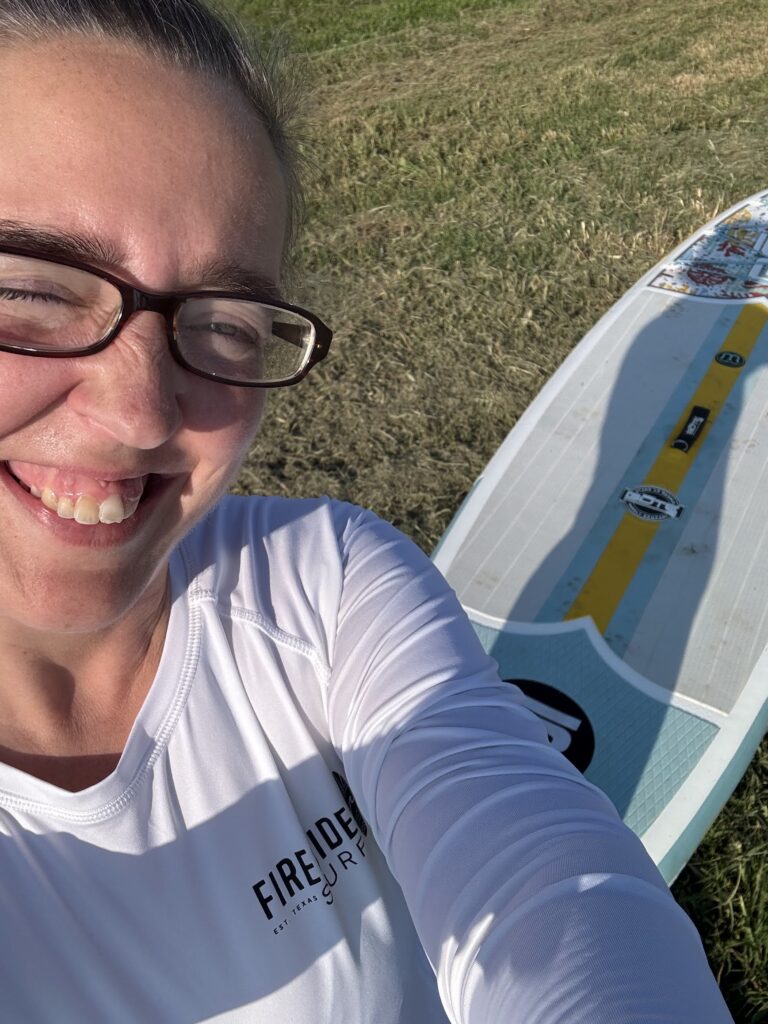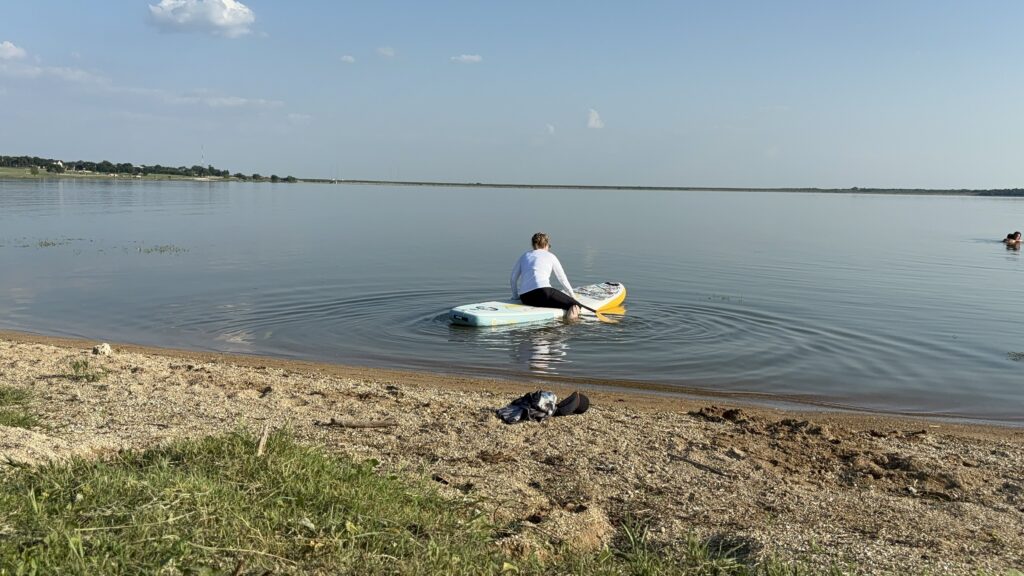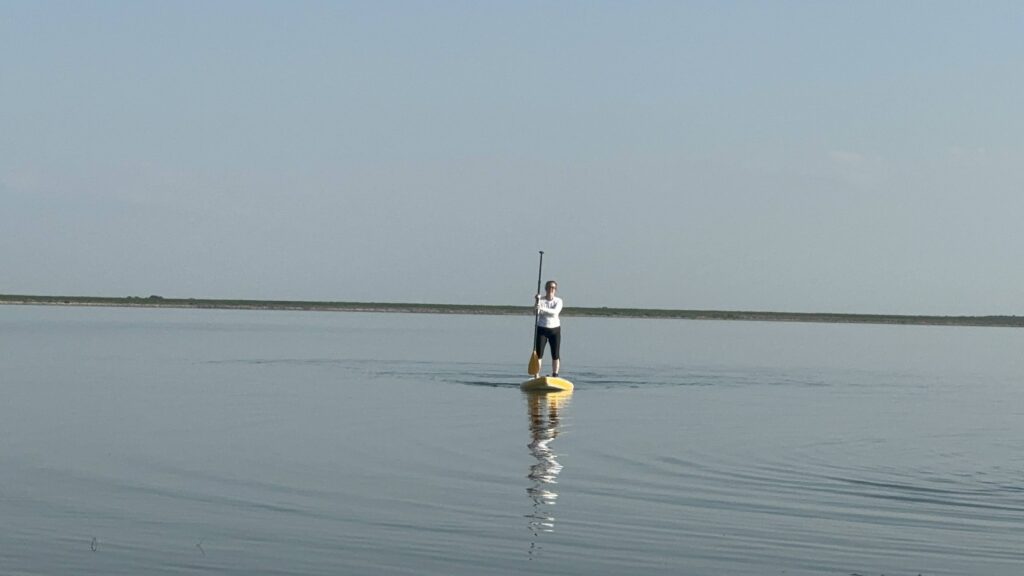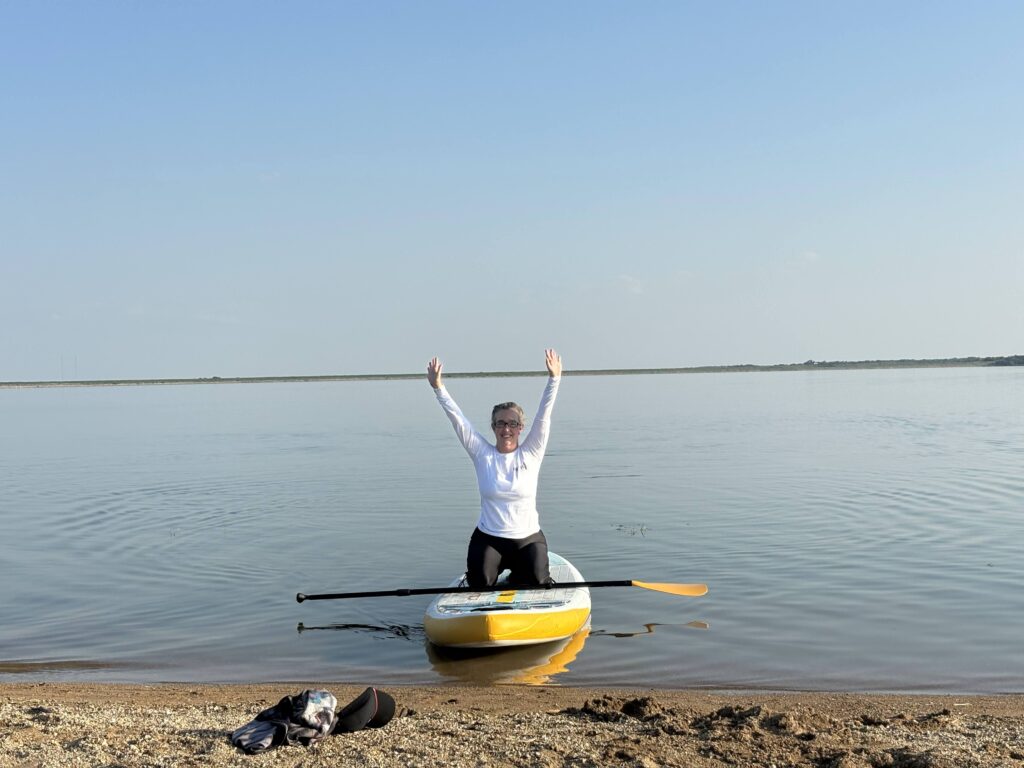iSUP: 7 Great Beginner Tips
I’ve wanted an inflatable stand-up paddle board, also known as an iSUP, for a while. When I had the opportunity, I sold our kayaks and traditional foam stand-up paddle boards and bought one.
After taking it out a time or two, I figured I would give you a guide to get started yourself in case you have any questions.
Points for Your Purchase
- Purchase a board that is about 50 lbs. over your weight limit. If you purchase one right at your weight limit, you will struggle to stand up properly on the board, which is crucial to enjoying the ride.
- Make sure it has the features you want. I went with a BOTE because I wanted an iSUP that I could convert into an inflatable kayak. You can imagine my excitement when I found out it also has a place to securely connect a magnetic cup or speaker.
- Portability. I decided to go with an iSUP because I can take it more places by putting it on my back. It’s a lot harder to lug a foam board around.
- Consider additional items you want. You might just want an iSUP, but I will purchase a few more things for mine soon. These include a set-up for my GoPro and lights on the paddle board’s lower end.
One Drawback to an iSUP (and How I Overcome It)
One of the big drawbacks to an inflatable stand-up paddleboard is the need to inflate it. Every kit I’ve seen comes with a hand pump. This guarantees you’ll get your upper body workout when you go paddle boarding.
I knew I was not interested in adding that much extra time and arm strength, so I purchased a Cycplus Smart SUP Air Pump. It has worked beautifully.
With my iSUP, I did have to learn that it will say it’s at 0.5 PSI until it hits seven PSI, and then I have to let it go until it’s at six PSI. I’m still a bit scared that I will pop the paddle board, but I am sure that nervousness will ease with time. Added bonus? It also deflates the paddle board in record time, making take-down super easy as well!
Now… Getting You Up
You’ve got the paddle board to the water and inflated it. Now, where do we go from here? Follow along, friend; I’ve got you!
Getting On and Standing Up
It’s best to start out in calm water. I’ve been stand-up paddle boarding for about five years and recently went to the lake when it was super windy and choppy. The entire time I was out, I never stood up. This is the second time that’s happened. Starting out on calm water will help you to get up and feel confident on your board.
Take your iSup out into the water to about knee depth. The goal is to ensure your fins are not hitting the bottom. Then, find the board’s center point (where the handle is), grab the opposite side, and hop on.
Sit on the board for a bit until you feel comfortable, then get in a kneeling position and paddle board like that for a bit. Once you are feeling strong, slowly work your way up to standing. This took me about ten minutes the first time I was out, but everyone is different.
Also, it’s good to do this slowly. It’s not a quick pop-up like surfing. You should keep your knees bent while standing on the iSUP for better balance.
Staying On and Falling Off
Once you’re up, you want to keep your feet parallel, about hip distance apart, and be centered on the board. Continue bending your knees and keep your toes pointed forward. Also, keep your eyes on where you are headed. If you move to change steering positions, do so at the hips.
It never fails, though; you are going to fall off eventually. To reduce injury, you should fall into the water. Falling onto your board is more likely to hurt you. Try to hang onto your paddle if at all possible. If not, get back on your board before using your hands to retrieve your paddle.
Getting back on is also fairly easy. Simply position yourself at the center of the board, grab the handle, let your legs float up, and kick your legs up to slide back onto the board.
Wrapping It Up
I hope this helps calm some of your nerves as you consider purchasing your own iSUP. If you have any other questions, I would be happy to answer them! Just shoot me a message down below.











